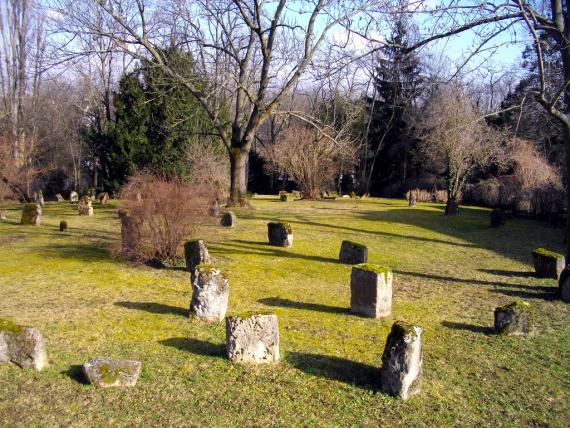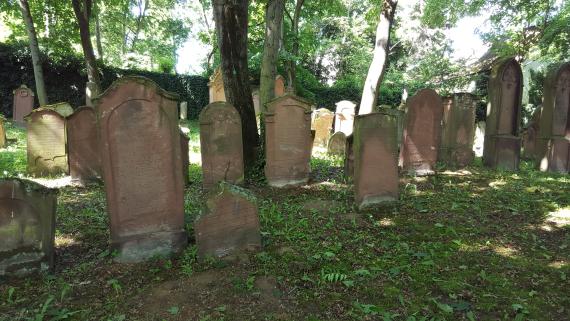Mombacher Straße
55122 Mainz
Germany
The Judensand is one of the ältesten Jüdischen Friedhöfe Europe. A tombstone found there dates to the year 1049 - it is exhibited with permission of the Jüdische Gemeinde Mainz in the Landesmuseum Mainz.
With the banishment of the Jüdinnen*Juden from Mainz in 1438, the cemetery was destroyedürt and partly used as a vineyard. Gravestones were used as building material for buildings in the city.
From about 1700, part of the medieval cemetery area was again used for Jewish burials. It is the lower part, which borders on the Mombacher Straß.
1880 the cemetery was closed. A new Jewish cemetery was established on Untere Zahlbacher Strasse.
In 1926, at the request of Rabbi Sali Levi, a memorial cemetery was built on another part of the medieval area. It was created from medieval gravestones recovered during demolition and construction works in the city.
Today, the Jewish Sands consists of three parts, all located on the medieval cemetery area: a section used from 1700-1880, a memorial cemetery built in 1926, and an adjacent area where a school stood until 2007, and during its demolition another medieval burial ground was discovered. Since then, this piece is also part of the „Eternal Place" and is under monument protection.
The 1926 established monument cemetery is unique in Europe. It illustrates how important Magenza, the Jüdische Mainz, was and still is today after almost 1000 years of history.
The Judensand Cemetery is part of the serial application of the SchUM cities Speyer, Worms and Mainz as a UNESCO World Heritage Site 2020/21.


Add new comment